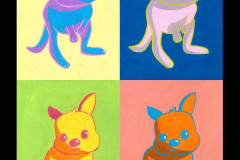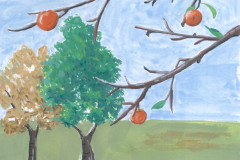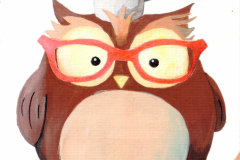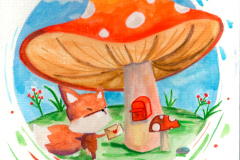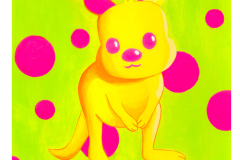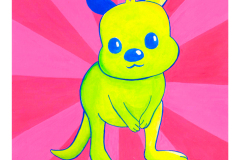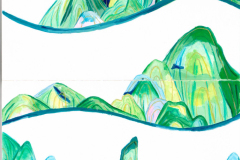Introduction
Gouache and mixed media art offer exciting opportunities for artists to express their creativity through unique textures and layers. Gouache, known for its opaque watercolor qualities, allows artists to create paintings with rich colors and matte finishes. When blended with various media, it brings depth and dimension to artworks that simple paint alone cannot achieve. You might wonder how to start combining gouache with other materials effectively or how artists around the world inspire these techniques.
Global art styles have influenced mixed media practices, merging cultural elements with innovative uses of materials. Exploring these international approaches provides insights on how to diversify your art and expand your techniques. This article breaks down how you can incorporate gouache with mixed media blends, drawing from global inspiration to elevate your artistic projects. You will find practical ideas and guidance suitable for both beginners and experienced creators.
Introduction To Gouache Paint
Gouache paint is an opaque, water-based medium known for its vibrant colors and matte finish. It consists of fine pigments combined with water-soluble binders. Unlike watercolor, gouache has a thicker texture and blocks out underlying colors, giving you full coverage with fewer layers.
It differs from acrylics by drying to a flat, non-shiny surface and reactivating with water, allowing for adjustments even after drying. You can layer gouache without the risk of scraping off previous layers, unlike acrylics which form a plastic film.
Artists have used gouache since ancient times for detailed illustrations, posters, and design work. Today, it remains popular in commercial art and fine art for its quick drying time and versatility. Has your practice tried playing with gouache’s unique texture and color play?
Gouache Composition And Properties
Gouache combines pigments, water-soluble binders, and fillers like chalk or calcium carbonate. The pigments provide color intensity, while the binders hold the paint together and allow for smooth application.
Fillers increase opacity and give the paint its characteristic matte finish. They affect drying time, making gouache dry faster than watercolor but slower than acrylics. This balance helps you to layer colors or blend smoothly without losing vibrancy.
The texture can feel creamy or slightly chalky, depending on the ratio of fillers. Understanding these elements helps you control how your paint reacts on paper or board, opening doors to more precise and deliberate effects.
Historical Background And Uses
Gouache dates back to ancient civilizations where artists used it for manuscripts and murals. It gained ground during the Middle Ages for illustrated texts and later became a staple for poster artists in the 19th and 20th centuries.
Its ability to deliver bold, flat areas of color made it ideal for commercial printing and advertising. Modern artists appreciate gouache for dynamic illustrations, concept art, and fine art paintings.
Have you noticed how many cultures have employed gouache or similar mediums to tell stories visually? Its global history shows how accessible and adaptable this paint has always been to artistic needs.
Understanding Mixed Media Art
Mixed media art combines different materials and techniques into a single artwork. Unlike paintings that use one medium, mixed media brings together various elements to add texture and depth. You might see paint mixed with paper, fabric, or even metal pieces. Gouache fits well here because its opacity allows you to layer colors without losing underlying details.
Common combinations include gouache with ink, charcoal, collage papers, or acrylic washes. For example, you can paint a gouache base, add ink outlines, then stick paper fragments on top for a tactile feel. These blends invite experimentation with texture and transparency. How could mixing gouache with unexpected materials change your work? What new stories can you tell by combining more than one medium?
Types Of Mixed Media Art
Collage uses pieces of paper or fabric glued on a surface. You can paint over these scraps with gouache to unify the image or highlight details.
Assemblage creates 3D art from found objects like wood or metal. Gouache adds color or pattern to these materials, turning everyday items into art.
Found objects art reuses items from the environment. Applying gouache makes it easy to add vibrant color where needed.
Wet and dry media combine fluid paints with pencils or pastels. Gouache offers a solid, matte layer that contrasts nicely with the softness of dry pastels or the sharpness of ink.
Which type speaks to your style? Trying each can reveal new ways gouache enhances textures and forms.
Famous Examples And Influences
Robert Rauschenberg changed mixed media by mixing paint, newspaper, fabric, and objects on large canvases. He used thick textures and unexpected materials to tell stories beyond traditional painting. Some of his work contains painted layers that resemble gouache in opacity and finish.
Kara Walker uses cut paper silhouettes combined with painted surfaces, using bold contrasts that gouache can mimic through its rich coverage.
Jasper Johns incorporated encaustic wax and collage with painting, showing how layering creates unique textures and meaning. His approach encourages you to think beyond simple tools and seek new combinations.
How does exploring these artists’ methods inspire your own practice? What materials could spark fresh ideas when paired with gouache?
Incorporating Gouache Into Mixed Media
Gouache offers a unique balance of opacity and vibrancy that works well with other media in mixed projects. You can apply gouache over charcoal or pencil for bold, colorful highlights, or layer it beneath thin washes of watercolor to add depth. The paint reactivates with water after drying, so plan your layers carefully to avoid unwanted smudging.
Try combining gouache with ink or collage elements. Use a brush or palette knife to spread thick gouache textures next to smooth ink lines. Experiment with thinning the paint to create translucent overlays while keeping some areas solid and flat. Each method emphasizes different qualities of gouache within the same piece.
Have you tested how gouache reacts with gel mediums or pastes? Additives can increase texture and adhesion on various surfaces. Using gouache within mixed media opens many possibilities—what combinations will you try in your next artwork?
Techniques For Layering And Texturing
Start by letting each layer dry completely before adding another. Gouache layers can lift if applied wet over wet. Applying gouache under acrylic or ink creates a sturdy base and rich color, while painting on top adds highlights or details.
To add texture, try sponging or stippling with a dry brush on semi-dry gouache. Mix sand, salt, or acrylic medium into your paint before applying to create raised effects. You can also scratch or scrape into thick gouache with a palette knife for subtle lines and marks.
Managing drying time helps control blending and sharp edges. How does changing texture in one area affect the overall mood of your piece? Use these layering and texturing methods to guide your creative choices.
Choosing The Right Surfaces
Heavier watercolor paper with cold press texture holds gouache and mixed media better than smooth surfaces. The absorbent fibers grab pigment, preventing peeling or cracking. You might also try Bristol board for smooth finishes that highlight sharp details.
Pine wood panels or prepared canvas boards add durability and unique texture if primed correctly. Some artists use textured paper like mulberry or handmade sheets to create organic effects when blending gouache with collage or graphite.
Ask yourself how surface texture impacts your layering style. Will you use layering to build up texture, or favor smooth transitions? Selecting the right surface supports both your technical goals and the look you want to achieve in mixed media gouache work.
Global Art Styles Influencing Gouache And Mixed Media
You can expand your artistic range by studying how different cultures use gouache and mixed media. Persian miniatures, for example, demonstrate detailed brushwork and vibrant layers that highlight gouache’s opaque qualities. The careful patterns and gold leaf designs found in these miniatures invite you to experiment with delicate detail combined with mixed textures.
European collage art often mixes painted layers with paper scraps or fabric. This approach encourages you to think beyond paint alone and consider shapes and materials as part of your composition. Textural contrasts and unexpected overlays can create energy and depth in your work.
When you understand how these global styles use color, pattern, or layering, you can bring similar techniques into your art. What elements from Persian miniatures or European collage could you apply to a piece today? How might cultural methods inspire your use of gouache and other media in new ways?
Cultural Traditions And Techniques
Persian miniature painting offers a clear example of using gouache with fine patterns and jewel-tone colors. Artists traditionally applied gouache in thin layers to build luminosity and depth. These pieces often include intricate, repeated motifs that can teach you how to balance detail without overwhelming the eye.
Collage art from European modernists like Hannah Höch uses different paper textures combined with paint. Through layering torn paper and painted shapes, they explored visual rhythm and contrast. Try applying fragments of printed material with gouache washes to mirror this technique.
How could you merge these artistic traditions in your work? Experimenting with the patience needed for miniature layering alongside the freedom of collage might push your style in exciting directions.
Inspiration From Contemporary International Artists
Contemporary artists blend global influences to update traditional gouache and mixed media approaches. For instance, Wangechi Mutu combines African motifs with collage and gouache to express identity and narrative. Her layered textures and figures show how cultural storytelling can inform technique.
Another example is Japanese artist Takashi Murakami, who merges bright gouache painting styles with collage and digital media. His work encourages you to rethink how cultural motifs and digital blending can interact in physical media.
Looking at these artists, consider what cultural symbols or methods inspire your work. How do they use gouache to unite tradition and modern media? Applying similar global perspectives can make your own creations richer and more meaningful.
Materials And Tools For Gouache Mixed Media
Choosing the right materials shapes your gouache and mixed media work. Gouache paint stands out because of its opacity and matte finish. It pairs well with textured papers like heavyweight watercolor paper or Bristol board, which handle layers without warping.
Brushes influence how paint spreads. Round synthetic brushes offer control for detail, while flat brushes create broader strokes. Soft natural hair brushes absorb water differently, affecting blending and layering. Experiment with both to see how texture emerges with mixed media.
Adhesives matter for adding collage or other elements. Acid-free glues keep surfaces safe and flexible. Gel mediums can add gloss or texture when combined with gouache.
Each tool changes your work: a stiff brush leaves brush marks, while a sponge creates soft transitions. Ask yourself how you want your layers to interact. Do you want sharp edges or smooth blends?
Essential Supplies And Brands
Reliable gouache brands make mixing easier. Winsor & Newton Designers’ Gouache offers strong pigment and smooth consistency, perfect for layering with other materials. Holbein and M. Graham supply creamy paints with high pigment loads.
For papers, Arches cold-pressed watercolor paper is sturdy and holds mixed layers well. Strathmore 400 series Bristol board works for detailed mixed media because of its smooth surface.
Choose archival quality glue sticks or matte medium for attaching paper or fabric to your paintings. Liquitex matte gel medium can add surface texture and seal layers.
You’ll want palettes that don’t dry paints too fast. Stay wet palettes or ceramic dishes help maintain paint moisture for longer mixing sessions.
Specialized Tools For Mixed Media Effects
Palette knives create sharp lines and scrape paint off for texture. They work well with thick gouache layers or adding highlights. Sponges help with subtle gradients or textural effects on big areas. Try synthetic kitchen sponges for varied textures.
Airbrushes allow delicate layering and smooth transitions. Using them with diluted gouache opens fresh possibilities, such as shading or soft backgrounds. Masking tape helps protect areas while layering different media.
To get unique marks, use toothbrushes for fine splatters or cotton swabs for smudging. Texture paste combined with gouache enhances raised surface effects.
Which tools encourage you to explore new surface treatments? Testing how these tools interact with gouache can expand how you approach your art and bring fresh dimension into your work.
Step By Step Project Ideas Using Gouache And Mixed Media
You can create vibrant artworks by combining gouache with other media following simple project steps. Start by applying a base layer of gouache on thick paper or cardstock. Allow it to dry fully before adding textures like tissue paper, fabric, or dried leaves with glue. This layering enhances depth and invites tactile interest.
Choose colors that support each other by using a limited palette or complementary schemes. Mix gouache with ink or colored pencil for sharp details on top of your painted layers. If a mistake happens, wait for the paint to dry and gently lift it with a wet brush or use a white gel pen to fix highlights afterward.
Try building your work gradually, alternating gouache washes with collaged elements. Think about the order in which materials adhere best and plan your layers accordingly. How will your piece change as you add more media? This approach encourages experimentation while maintaining control over harmony and texture.
Beginners Projects To Try
Start with mixed media postcards using sturdy paper. Paint simple shapes or backgrounds in gouache, letting each layer dry before adding stickers, stamps, or doodles with marker pens. This project introduces you to layering while keeping the surface manageable.
Create collages combining torn paper scraps painted with gouache and glued onto card. Use contrasting colors or patterns to create balance. This lets you practice applying gouache as both paint and design element.
Try painting small botanical studies in gouache, then add pencil details or watercolor washes for contrast. Can you capture texture by mixing these materials? These easy experiments build confidence and show how gouache fits with other media.
Advanced Techniques For Experienced Artists
Work on multi-layered panels by combining thick gouache layers with textured mediums like modeling paste or fabric scraps. Build raised elements before painting over them with translucent gouache washes to emphasize dimension.
Incorporate three-dimensional components such as wire shapes, beads, or paper cutouts attached to your work. Paint with gouache around or over these objects to unify them visually and create shadows.
Use masking techniques to preserve areas while layering colors. Adding dry brush details, splatters, or scratching into semi-dry gouache adds complexity and interest. How far can you push texture and form without losing harmony? Challenging yourself sharpens your skill and artistic voice.
Common Challenges And How To Overcome Them
Working with gouache in mixed media often brings challenges like cracking, adhesion problems, and color shifts. Cracking happens if you apply thick gouache layers over a dry surface or use incompatible materials. To avoid this, apply thinner layers and allow each to dry fully before adding more. Using flexible paper or canvas designed for mixed media also reduces cracking risks. Adhesion issues arise when the surface isn’t clean or when combining water-based gouache with oily or non-absorbent materials. You can improve adhesion by lightly sanding or priming surfaces, and testing new materials first on small patches. Color shifts often confuse artists because gouache dries lighter than it appears when wet. Test swatches and paint samples side by side to get familiar with your paint’s behavior. What surfaces or methods have caused you trouble? Trying different approaches will help you find what works best for your style.
Managing Gouache Drying And Color Changes
Gouache colors appear different when wet versus dry. You might paint a vibrant blue, only to see it soften as it dries. Knowing this helps you plan your colors and layers effectively. To manage color shifts, create a color swatch card showing wet and dry states side by side. Wait until your paint is fully dry to judge its true color. Adding a small amount of white to your paint mix can help predict final color more reliably. Layering on dry gouache rather than rewetting areas prevents muddy colors. Ask yourself: How does your paint behave after drying? Testing your palette on the actual paper or board you use will give you clearer control over your results.
Avoiding Material Incompatibilities
Mixing gouache with other materials can create stunning effects but also raises the risk of damage. Some inks, markers, or adhesives react negatively with water-based gouache, causing peeling or color changes. Always test combinations before starting a full piece. Apply small amounts of each medium side by side on your surface. Look for signs of cracking, smudging, or flaking after drying. Use archival-quality papers designed for wet and dry media to improve durability. When layering, give each medium enough time to dry fully. Have you noticed unexpected reactions when mixing your materials? Setting up simple test sheets will save you time and frustration in the long run.
Building Your Style With Gouache And Mixed Media
Your artistic style grows when you mix global influences with hands-on experimenting. Start by gathering inspiration from different cultures’ artworks. Notice how colors, patterns, or textures appear in traditional crafts or paintings worldwide. Try blending these elements with gouache and other materials you enjoy.
Test various tools and surfaces. Gouache reacts differently on paper, wood, or fabric. Combine it with collage, ink, or pastels to find new effects. Ask yourself what feels natural and exciting to create. Reflect on how these techniques relate to your vision and goals. Use your cultural inspirations not as rules but as starting points to build original ideas that speak to you.
How can you turn global art into something personally meaningful? Experiment freely. Make choices based on your own taste, not just trends or rules. Over time, this process sharpens your unique voice through both skill and creativity.
Finding Your Unique Visual Voice
Adapt techniques and cultural inspirations by making them yours. Start by choosing specific elements that resonate with you. Maybe it’s the bold shapes of African textiles or the layered brushwork seen in East Asian paintings. Modify these to fit your style instead of copying exactly.
Create small pieces focusing on one technique or motif at a time. See how the style shifts when you adjust colors, scale, or materials. Ask what each choice communicates about your artistic message. Align these elements with your goals, whether storytelling, emotion, or visual impact.
Shake up your routine often and stay open to change. Your vision may grow as you combine unexpected sources. Ultimately, your style should feel like a clear expression of who you are as an artist. What small changes help your work reflect your own story?
Documenting And Evolving Your Work
Keep track of ideas, experiments, and results regularly. Use a sketchbook or digital journal to note which materials and methods worked best. Write down your thoughts on each piece, especially what you learned or want to try next.
Review your progress monthly or after each project. Compare early and recent work to see changes and patterns. This reflection helps identify strengths and areas to develop. Keep samples or photos to build a visual timeline of your evolving style.
Make time for continuous practice and learning. Attend workshops, watch videos, or join artist groups focused on gouache and mixed media. Seek feedback and test new cultural influences. How does your style respond to fresh challenges? Tracking this growth keeps your art dynamic and aligned with your creative goals.
Resources For Continued Learning And Inspiration
Finding reliable resources helps you stretch your gouache and mixed media skills beyond your current limits. A few well-chosen books can offer deep insight into techniques while showing how artists worldwide apply their unique styles.
Try “The Gouache Book” by Lynette Firmin. This guide includes step-by-step projects that combine gouache with other media, showing you practical ways to create texture and layering. For mixed media, “Mixed Media Masterclass” by Rachel Rubin Wolf provides solid exercises and examples from different cultures.
Online tutorials on platforms like YouTube and Skillshare often focus on global techniques. Artists such as Nanaquita and Aaron Blaise mix gouache with inks and collage, revealing how cultural motifs influence their work. These tutorials are great for hands-on practice.
Books And Online Tutorials
Books remain valuable for detailed learning. “Gouache for Beginners” by Alicia V. Bock presents fundamentals and encourages experimentation. “Collage Workshop” by Randel Plowman teaches blending collage with gouache for vibrant mixed media pieces.
On the internet, websites like Creative Bug and The Virtual Instructor offer structured courses. They cover layering, color mixing, and combining gouache with other materials. Look for lessons that discuss indigenous patterns or Asian brush techniques to infuse your art with global elements.
Communities And Exhibitions
Joining artist groups can boost your motivation and connect you with worldwide creatives. Try The Mixed Media Art community on Facebook or Reddit’s gouache art forum to post work and get feedback regularly.
Instagram’s #GouacheArt and #MixedMediaArt hashtags also link you to a diverse network of artists sharing their processes. Participating in local exhibitions or online shows like the Global Art Collective encourages sharing global influences and learning new ideas.
What global art styles could inspire your next piece if you joined these groups? Would sharing your work push you to try new mixed media blends?
Conclusions
Using gouache in combination with mixed media can transform your artwork by introducing new textures and diverse visual effects. By learning from global art styles, you gain fresh inspiration that can guide your creative process. Experimentation is key, and knowing how to balance different materials will help you achieve compelling results. Keep exploring materials like paper, cloth, and found objects to discover what complements gouache best in your work.
Your art will develop through practice and willingness to try new techniques seen worldwide. Remember the importance of understanding each material’s properties, including the opacity and drying behavior of gouache. Use your creativity to merge styles and methods that resonate with your vision. The more you integrate knowledge from diverse sources, the richer your art will become, encouraging continuous growth and innovation.



















